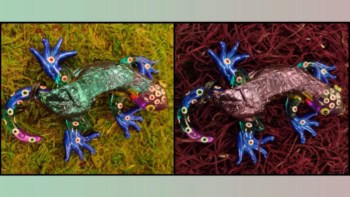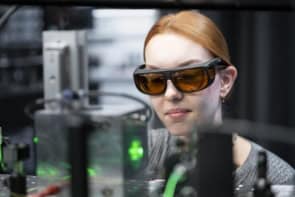Techniques for measuring ultrashort pulses have come a long way in the last 10 years. Marie Freebody speaks to Rick Trebino about the intricacies of working at femtosecond timescales and how the devices that characterize such pulses can be commercialized

Rick Trebino is the Georgia Research Alliance-Eminent Scholar and chair of Ultrafast Optical Physics at the Georgia Institute of Technology, US. He is the co-inventor of frequency-resolved optical grating (FROG) and the inventor of grating eliminated no-nonsense observation of ultrafast incident laser light E-fields (GRENOUILLE) — two methods for measuring ultrashort laser pulses. In 2001, Trebino founded Swamp Optics, a US company that offers innovative and cost-effective devices for measuring ultrashort laser pulses.
Can you summarize how ultrashort pulses can be characterized?
An ultrashort pulse is a light pulse less than about 1 ns in duration. In the 1960s, it became possible to generate such pulses, which were shorter than the temporal resolution of even the fastest electronics, and the field of ultrashort-light-pulse measurement was born. The problem is that, in order to measure an event in time, you need a shorter event. But, because ultrashort pulses are the shortest events ever created, you can’t, so you must use the event to measure itself, which isn’t good enough.
Early techniques based on this idea yielded only a blurry picture of the pulse intensity versus time and provided little or no information about the pulse phase.
Recent techniques have improved on this idea. For example my colleagues and I realized that by simply spectrally resolving an autocorrelation and applying clever mathematics from the field of phase retrieval we could completely measure a pulse. We were able to measure the pulse intensity and phase versus time and frequency, without the need for a shorter event. We called this method FROG. Since then, other methods, including many variations on FROG, have been proposed and developed. However, spatio-temporal pulse distortions and other complexities significantly complicate measurements of ultrashort pulses, so a technique must also provide some sort of confirmation of the measurement.
Why is this research important and what are the main applications?
The first application was in ultrafast spectroscopy. Another significant application is multiphoton microscopy, in which an ultrashort pulse is focused tightly into a sample, and the two-photon fluorescence (or other nonlinear-optical signal) is collected versus position. Here, the complete spatio-temporal measurement of the pulse is important because its spatial width determines the spatial resolution, and its temporal width determines the sensitivity. Other applications include ultrahigh-intensity lasers, micromachining, high-bandwidth telecommunications and coherent control of chemical reactions.
Is it easy to transfer this technology from the lab to the market?
The majority of ultrashort-pulse measurement devices are difficult to commercialize because they are very complex, require frequent re-alignment, work only for very simple pulses, and give no feedback as to whether their result is correct. We have avoided this problem by developing methods that are experimentally very simple and insensitive to calibration parameters. Our methods also give immediate feedback when a problem occurs, so the user knows if, for example, the pulse has spatio-temporal distortions. These new methods are so simple, compact and reliable that, in large quantities, they are very inexpensive and can be included in most ultrafast laser systems. This is particularly important for ophthalmological applications, where the correct pulse is critical for eye safety.
What is the most important recent advance in this field?
Recently it has become possible to measure the complete spatio-temporal electro-magnetic field of an ultrashort pulse. My group has demonstrated two different techniques, one based on spectral interferometry and another based on holography. The first method can measure even a tightly focused pulse and has seen a wide range of complex aberration-induced spatio-temporal distortions. The second technique can measure an unfocused pulse in a single shot. Both approaches can measure very complex pulses, simply and cheaply, and are ideal for most applications.
What key challenges remain?
Several techniques for measuring attosecond pulses have recently been developed and even include the much-needed measurement confirmation. But more remains to be done. Another challenge is educating those who use ultrashort pulses as to which techniques work well, which are obsolete and which are still under development and should be avoided.
What is the next big breakthrough?
Most pulse-measurement problems have now been solved and it is easy to measure the complete spatio-temporal electro-magnetic field of even an arbitrary ultrashort pulse. Breakthroughs are likely to come from using these recently developed methods for new applications or to improve old ones.
• This article originally appeared in the November 2008 issue of Optics & Laser Europe magazine.



